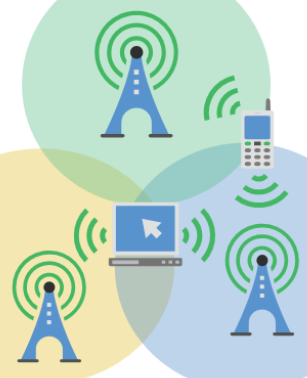Client Stories
Our partners and projects around the world
World Health Organization
One of our main partners is the World Health Organisation (WHO). We work with different departments and units building solutions critical to global health.
WHO Integrated Data Platform (WIDP)
WHO‘s integrated data platform (WIDP) is a DHIS2-based web platform to collect, analyze and visualise health data from various WHO departments. Currently it is being used by nine departments and units at WHO.
Since May 2018, EyeSeeTea has been working on the general maintenance of WIDP to ensure that all servers are working properly, helping with any user issues, and developing administration tools & scripts.

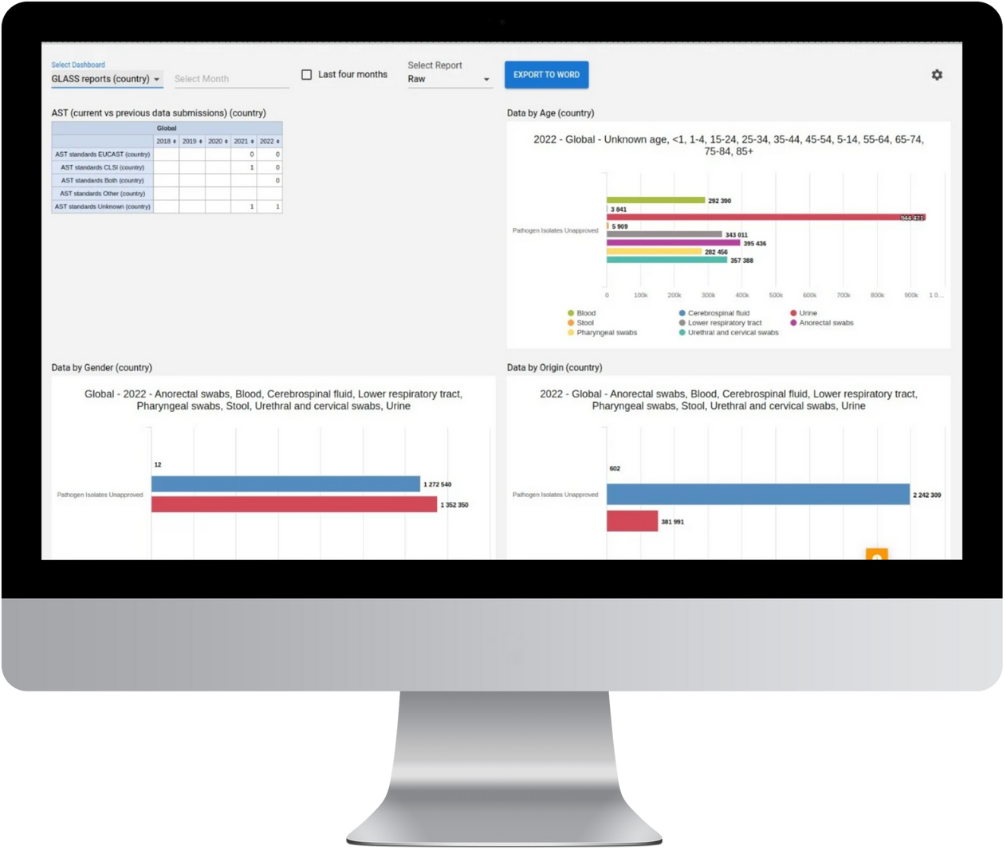
GLASS
Antimicrobial resistance (AMR) represents a major threat to human health. On 22 October 2015, WHO launched the Global Antimicrobial Resistance and Use Surveillance System (GLASS), the first global collaborative effort to standardize AMR surveillance.
GLASS facilitates the reporting of antimicrobial resistance and antimicrobial use (AMR) data by countries worldwide. It provides a standardized approach to the collection, analysis, interpretation and sharing of data by countries and seeks to actively support capacity building and monitor the status of existing and new national surveillance systems.
EyeSeeTea implemented the GLASS platform as a custom DHIS2 web application, utilizing the WHO Integrated Data Platform (WIDP) as its backend.
Global Malaria Programme Reports
The World Malaria Report tracks the global response to malaria. We have been working with the WHO Global Malaria Programme (GMP) on the Report since 2019.
We support GMP through multiple tools to track the status of Malaria worldwide, such as AutoGen Forms, Bulk Load, d2-docker and we are also developing custom functionalities for MetaData Sync.
The World Malaria Report uses both direct data input through a custom form and data from different countries imported with different DHIS2 tools.
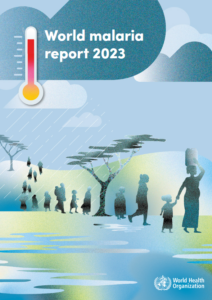

Malaria Threats Maps (MTM)
The Malaria Threats Map (MTM) was born out of a need for the WHO Global Malaria Program (GMP) to consolidate data on threats to malaria control and elimination into a single interactive platform. EyeSeeTea and Lushomo have been working during the last years on improving the user experience when using the platform as well as adding new features, maps and charts.
Now, anyone can use MTM to explore, interact with and download data from the WHO GMP databases.
Universal Health Coverage Policy Watch (UHCPW
The Universal Health Coverage Policy Watch (UHCPW) is a public online platform providing user-friendly and up-to-date country-level and comparative information and evidence on financial protection and coverage policy in the WHO European Region. The target public is policymakers, policy advisors, analysts, researchers, students, civil society organisations and journalists. This platform has been a huge improvement on the current way information about Universal Health Coverage is accessed, which is fragmented across different WHO platforms in the form of reports, excel sheets, databases, and other static formats. All the information displayed is compiled by the WHO-Barcelona office in a set of public reports.
This platform has been developed by EyeSeeTea and Lushomo
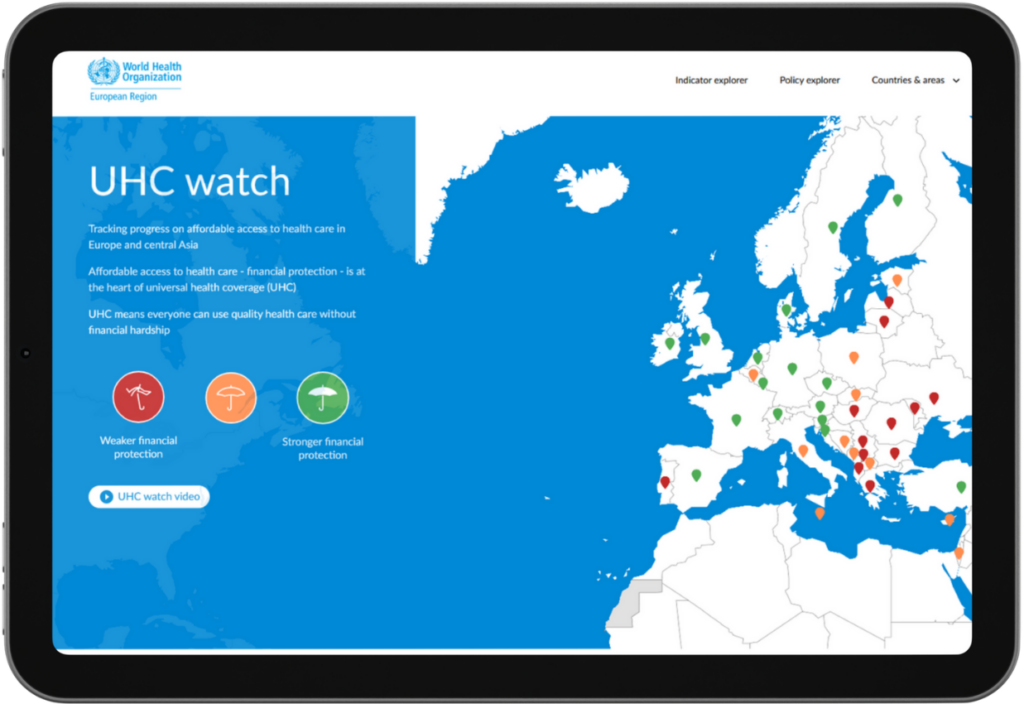
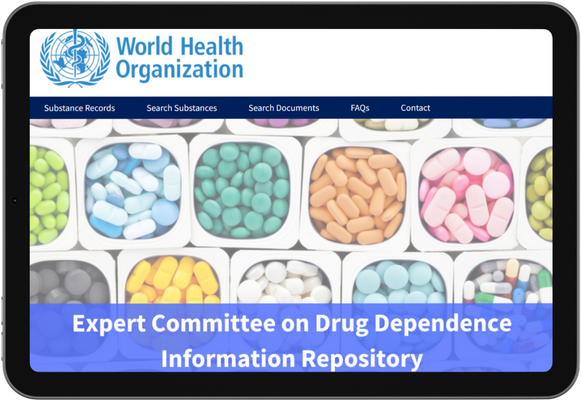
WHO Expert Committee on Drug Dependence (ECDD)
The ECDD Information Repository is an open access database containing publications and information on psychoactive substances reviewed by the WHO Expert Committee on Drug Dependence (ECDD).
The purpose of the repository is to provide the public, academics, health professionals, law enforcement and government staff an easy interface to find technical information about substances that have been reviewed by the ECDD.
This platform has been developed by EyeSeetea, using Drupal, an open source Content Management System known for its security, flexibility and scalability. We have customized the front-end to align with WHO design recommended guidelines and be accessible and user-friendly.
Simprints
Simprints and EyeSeeTea are working together to track the new vaccination against malaria, in partnership with Ghana Health Service, with support from Gavi, Arm, and The Steele Foundation for Hope.
Simprints' Malaria Vaccine Tracking Application
We’re strengthening the data tracking systems to optimise the rollout of the malaria vaccine in two regions of Ghana using a state-of-the-art biometrics mobile solution.
The customised version of the DHIS2 etracker application developed by EyeSeeTea is helping track the vaccination campaign, strengthening the data tracking systems to optimise the verified delivery of the malaria vaccine.

Resolve to Save Lives
In partnership with Resolve to Save Lives and the Zambia National Public Health Institute we are working on a state of the art outbreak surveillance system

ZEBRA: Zambia's Emergency Bridge for Response Application
We all know that in an infectious disease outbreak, time is of the essence. Public health agencies need to mobilize quickly, bringing together complex teams of technical experts to stop the disease in its tracks. ZEBRA is a tool built to make this easier to achieve.
We have developed an online DHIS2 platform that provides visibility into outbreaks across the country allowing for a faster and better response.
Samaritan's Purse
One of our main partners, we have developed several platforms and tools for Samaritans Purse during the last years, some of which have been adapted for new projects.
International Projects Platform: A web-based project monitoring solution
Samaritan’s Purse International Projects operates in more than 16 countries, implementing more than 180 projects across 14 sectors. We have developed an open-source DHIS2 based web platform for managing multidisciplinary projects.
It can monitor a whole project lifecycle (project creation, data collection and approval, data analysis, reporting, etc) and can work on low bandwidth and poor internet connectivity.
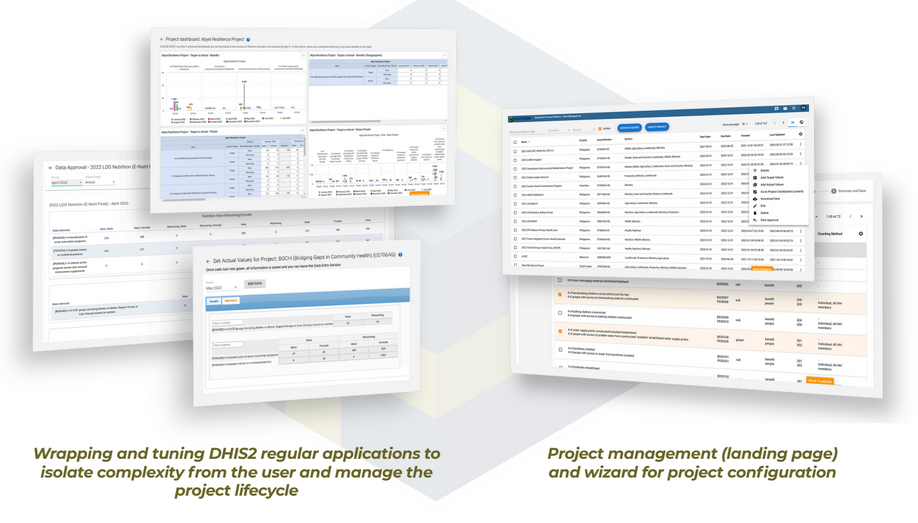
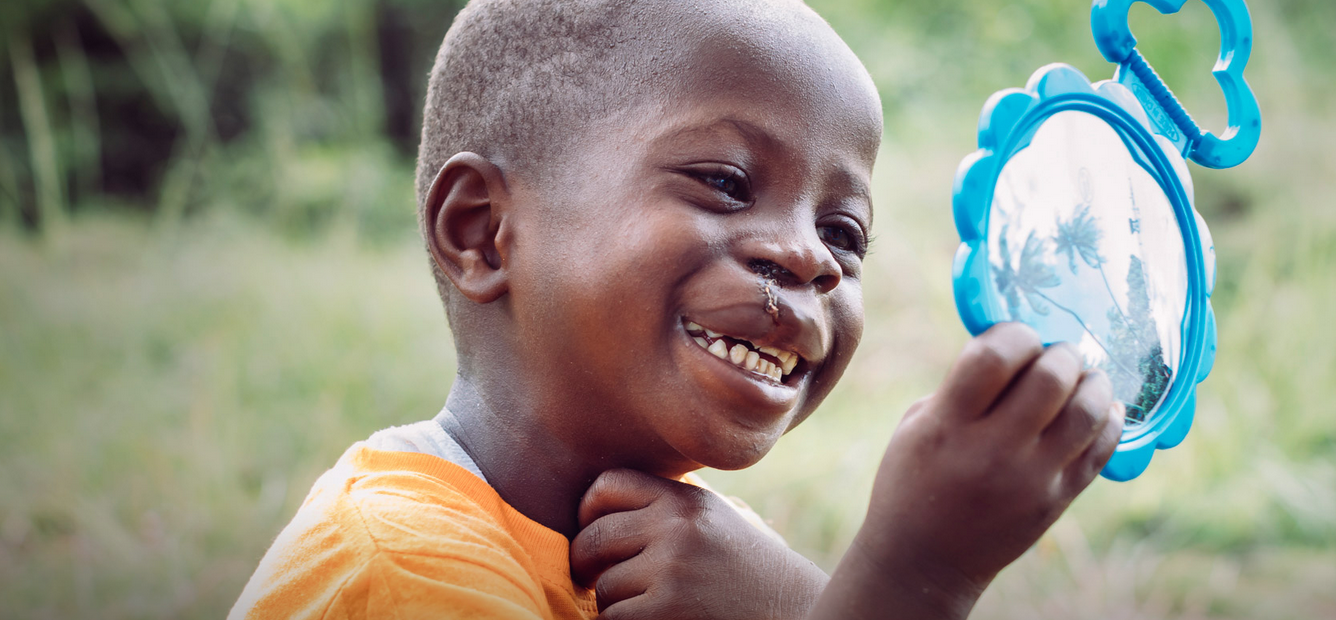
Cleft Lip & Palate Programme
Cleft lip and palate can be easily repaired in many nations, but the required surgeries often are not available in developing countries with inadequate healthcare. Children born with these medical issues often face a lifetime of ridicule and discrimination. That’s why Samaritan’s Purse sends experienced medical teams to impoverished areas to perform numerous cleft lip surgeries.
EyeSeeTea develops tools to help make this programme more efficient. Recently we have added new features and functionalities to the applications developed for this program as well as for the new one for facial reconstruction referral in specific cases.
CNB - Spanish National Centre for Biotechnology
The Instruct Image Processing Center (I2PC) at the Spanish National Center for Biotechnology (CNB) is an entity of the European Strategic Infrastructure Project (ESFRI) in the domain of Structural Biology. I2PC provides support to structural biologists, helping them to maximize the extraction of biological knowledge from their microscopy images.
3DBIONOTES-WS
A web based application designed to integrate protein structure, protein sequence and protein annotations in a unique graphical environment.
Current sources of information include post-translational modifications, genomic variations associated to diseases…
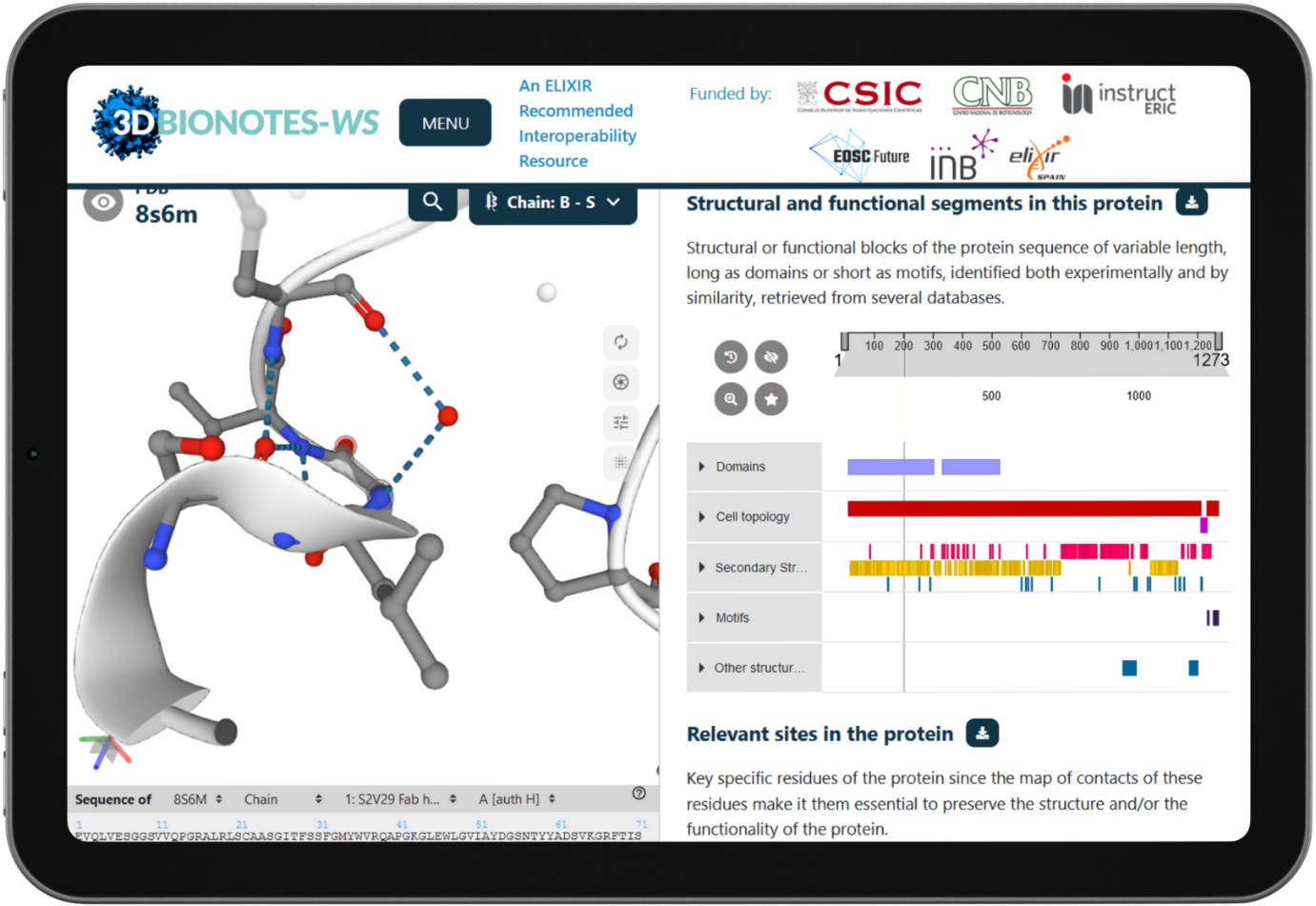
Former Projects
DHIS2
The core development activities of the DHIS 2 platform are coordinated by the Department of Informatics at the University of Oslo (UiO).
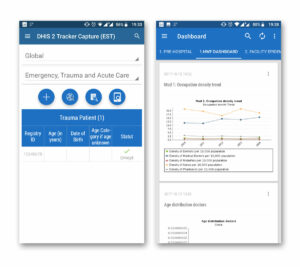
Official UiO Android Apps maintenance and development
From April 2017 to April 2018, EyeSeeTea was in charge of stabilizing, debugging, maintaining and upgrading the UiO Legacy Official Applications . These applications enabled users to register and read both aggregated and individual data stored in DHIS2 servers by using Android devices.
Development and architecture design for the new Official Android SDK
The Department of Informatics at the University of Oslo created a new Android Application, which aimed to substitute the previous four applications that manage the interaction between Android devices and DHIS2 servers. The new Application was composed by a front-end, that presents the information to the user, and a backend, which interacted with DHIS2 servers. The backend was the Software Development Kit (SDK), which was a separate product, so other developers were able to build their own front-ends and disregard the complicated DHIS2 technology. EyeSeeTea developed most of the initial desing that was used by the SDK.
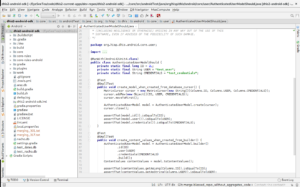
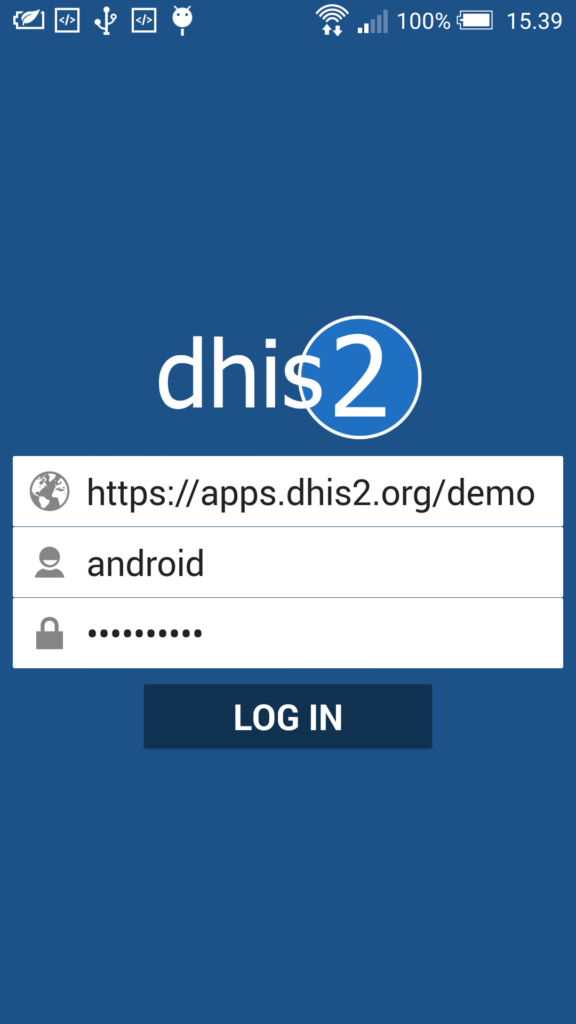
Android demo server maintenance
While developing the Android applications and the new Software Development Kit (SDK), EyeSeeTea also maintained the Android public server for testing purposes. This server hosted a set of DHIS2 instances. These instances offered a very useful platform to test the mobile application functionality and behaviour. A set of scripts and tailor-made tools allowed us to upgrade these instances automatically (database and/or source code) and to perform maintenance tasks.
Stress and performance tests for Android apps
In collaboration with the DHIS2 development team, EyeSeeTea performed stress and performance tests to the Android apps: four current applications plus the new Android app which uses the SDK behind the scenes. These tests aimed to understand the limitations in terms of users and data for the Android applications and the DHIS2 servers. The outcome was a clear understanding of the maximum number of users/applications, several suggestions regarding the server configuration and Android development, server specification tips based on the expected number of users and different approaches and techniques to improve the performance server and client side.


Architecture and Coding advice new generation app
EyeSeeTea also provided the framework, coding advice, and auditing to the UiO Android development team. This consulting covered technical aspects and best practices such as repository management, source code quality assurance, continuous integration tools and user feedback platforms and strategies along with development methodologies (sprints, task priorities, development cycle, team management, etc.).
As part of this work we helped with the design of DHIS2, specific strategies, concepts, and interactions. We answered questions such as ‘how can DHIS2-SDK be designed to improve the interaction with android framework?’ ‘What information should be given to other android developers, so they can build their own applications based on the DHIS2 data model?’ ‘What is the best way to communicate to the external developers the status of the development of the SDK?’
App for the Cambodian National Center For Parasitology Entomology and Malaria Control (CNM)
The University of Oslo and the Clinton Health Access Initiative contributed to our custom applications in the Malaria Case Surveillance domain by funding new functions and creating a new application for the Cambodian National Center For Parasitology Entomology and Malaria Control (CNM). The CNM application is picture-driven, which allows literarily-challenged people to register malaria cases using an Android device. The survey is conducted by clicking on images to register the information that the Cambodian CNM organisation needs for the epidemiology analysis. CNM also manages drugs-related issues to generate a basic stock control which is centralized in the DHIS2 server to which the application is connected. The application can work offline and it sends all the information to DHIS2 as soon as the device gets internet connection. All the information from the application is represented in a simple Event-based program in DHIS2.
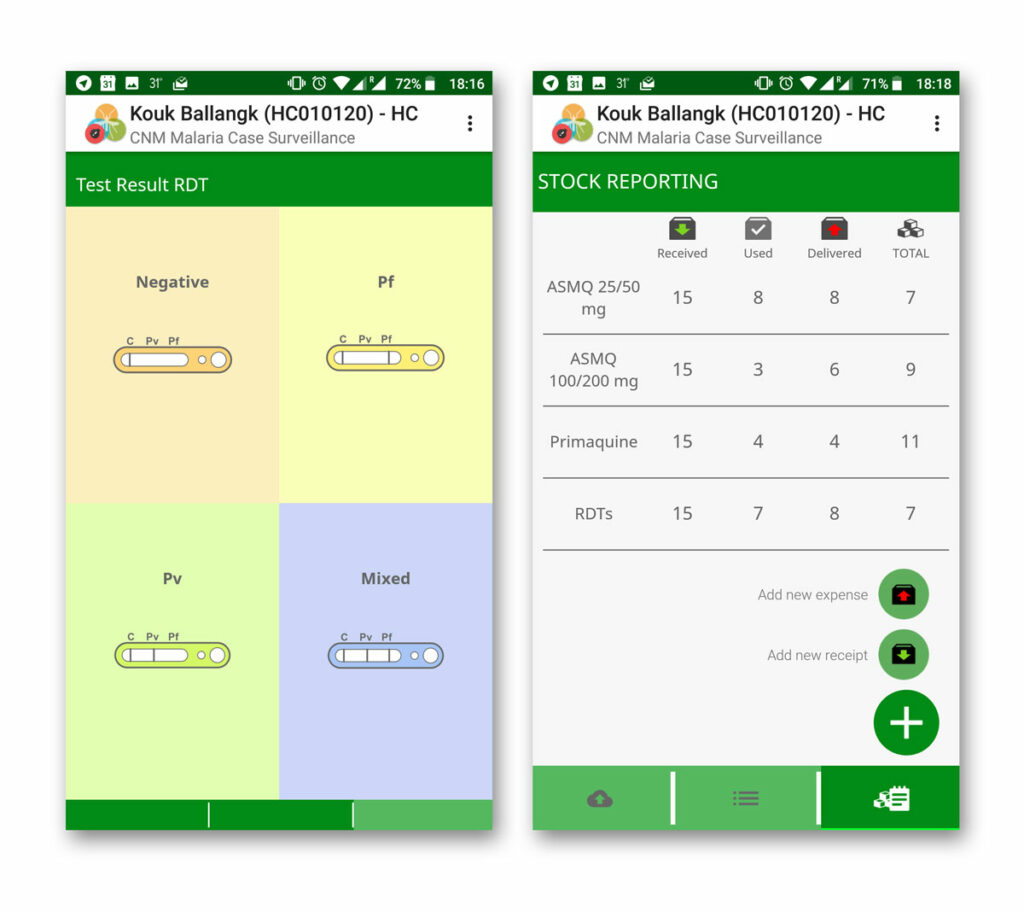
Save the Children Myanmar

As part of these efforts, Save the Children funded the development of a new application, which is based on PSI’s Malaria Case Surveillance applications with several improvements and new features. The MCBR Application collects data on malaria testing and treatment using a picture-driven survey. It also includes job aids and a minimal drug stock control functionality. The application works offline and sends all the information to a DHIS2 centralized server once it is connected.
PATH
PATH is a global organization that works to
accelerate health equity by bringing together public institutions, businesses,
social enterprises, and investors to solve the world’s most pressing health
challenges. With expertise in science, health, economics, technology, advocacy,
and dozens of other specialties, PATH develops and scales solutions—including
vaccines, drugs, devices, diagnostics, and innovative approaches to
strengthening health systems worldwide.
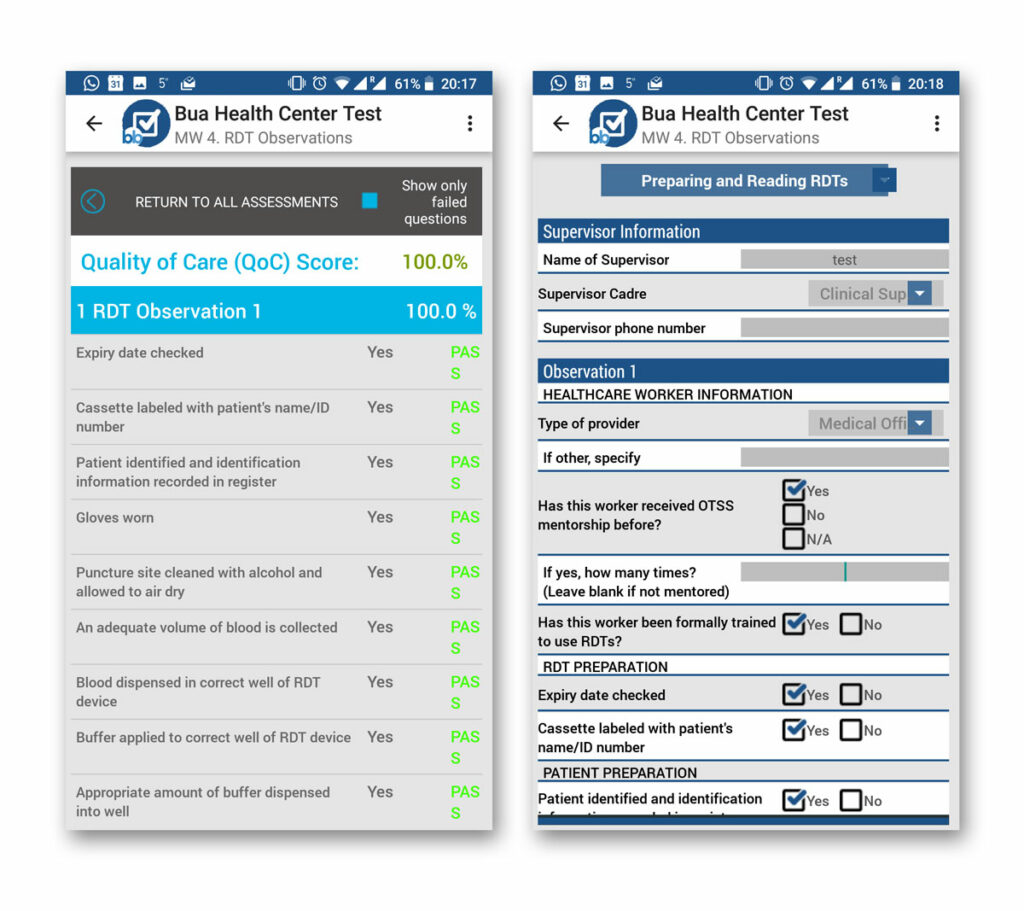
The application in an open source quality assessment tool connected with DHIS2 servers. The Applications synchronizes with DHIS2 in an initial sync process, and then turns DHIS2 programs and data elements into surveys and questionnaires that the user is able to fill in offline from an Android device.
This application was funded by PATH through the United States President’s Malaria Initiative-funded MalariaCare project and is widely used across several countries in Africa. The EDS was adapted from Population Services International’s (PSI’s) Health Network Quality Improvement System (HNQIS).
Population Services International (PSI)
PSI is a global health organization dedicated to improving the health of people in the developing world by focusing on challenges like a lack of family planning, HIV and AIDS, diarrhea, pneumonia and malnutrition, among others.
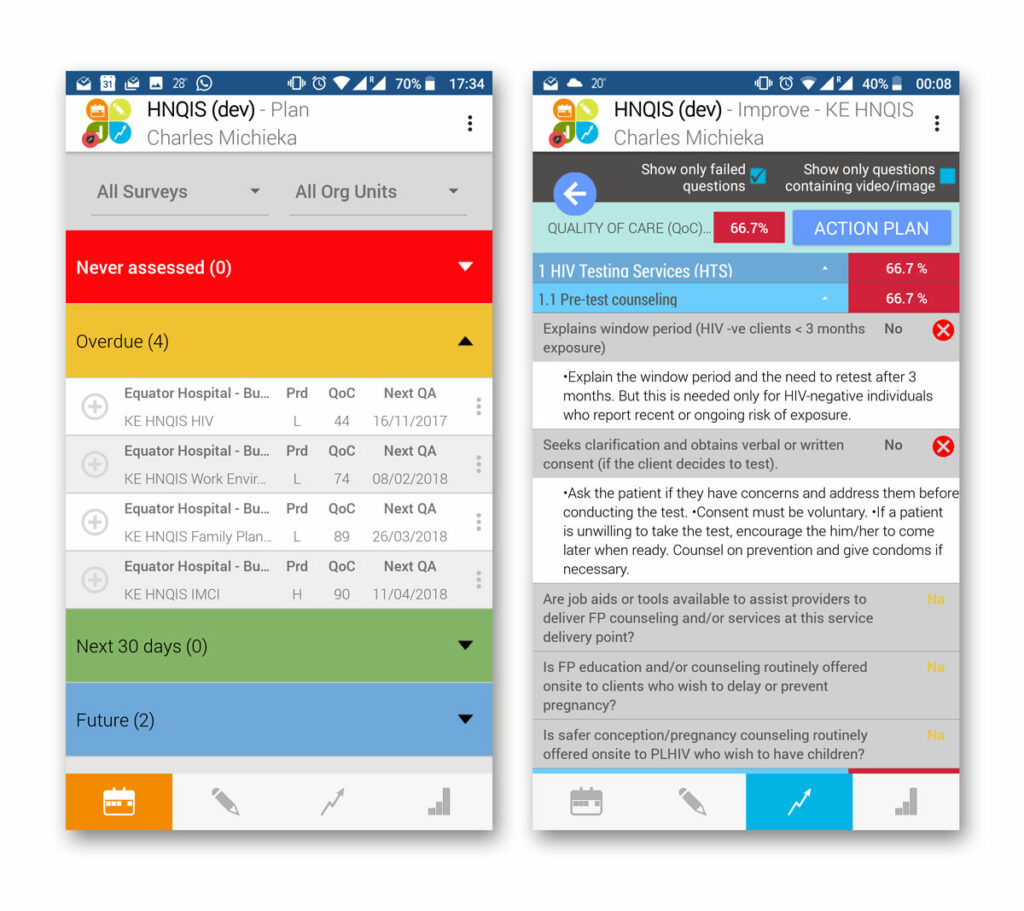
HNQIS Android App
Health Network Quality Improvement System (HNQIS), funded and deployed by PSI, is an Android application intended to analyze the global cycle of Quality Assessment on a health network. Using this application, healthcare providers can receive feedback by giving a survey to community members. In this way, a health facility and a health area can be assessed and monitored. This application also allows us to track the evolution of the independent facilities in the different health areas. The application works offline and sends all the information to DHIS2 when connection is available. HNQIS is automatically configured in a first sync process, by using DHIS2 programs such as surveys, and DHIS2 data elements as questions, allowing the user to fully customize how the information will be displayed in the application. One can also manage many other tasks such as how each question will be scored, and how often the surveys will need to be conducted. EyeSeeTea has been developing this applications since 2015. The application is widely used in many countries of Africa, America and Asia.
Malária: Testagem e Tratamento
MTT Application is a derivative of the CNM application. It registers malaria cases using the same principle as our other Malaria Case Surveillance apps, using DHIS2 as backend and using a picture-driven interface on the front-end to make it easier for illiterate people to follow the workflow. MTT stores both information about the cases and information about the drugs & mRDT stock, while recognizing and treating different users coming from a Health Center and a village malaria worker.
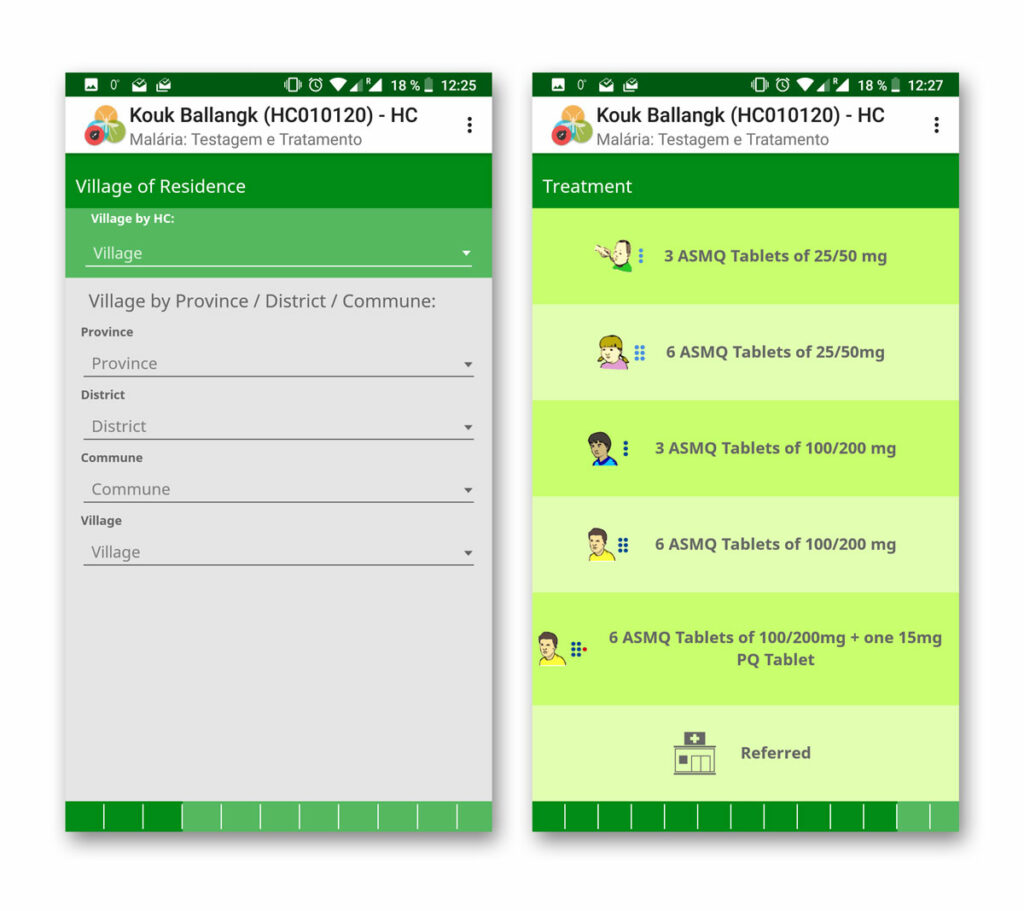
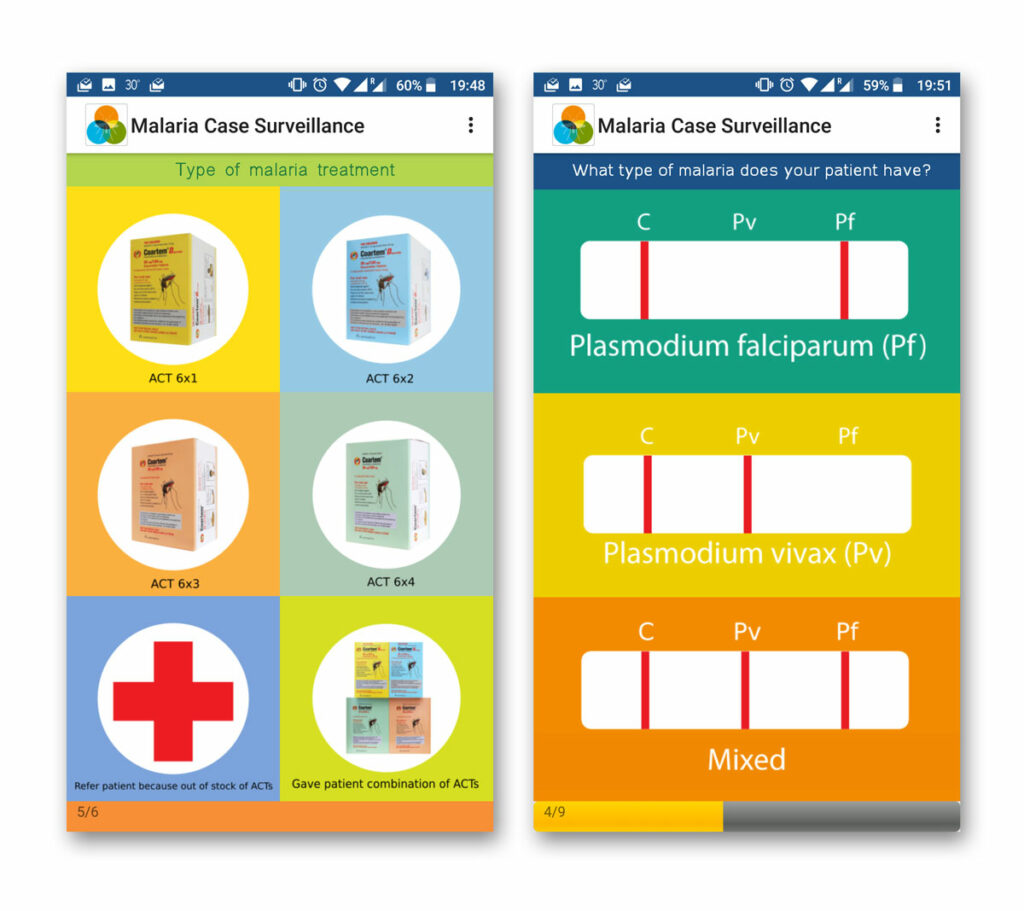
Malaria Case Surveillance Cambodia & Laos
Starting in 2015 for Cambodia, and 2016 for Laos, PSI modeled the development of the Malaria Case Surveillance applications on the foundations of the other Malaria Case Surveillance applications that developed (for Save the Children and the Clinton Health Access Initiative). These applications are able to, by using a picture representation of the different options of the survey, register malaria cases conducted by illiterate people completely offline, and send it later to DHIS2 once the device is connected to internet.
Connect with Sarah
Community workers are a key profile in PSI’s networks. They go inside the communities, sometimes very isolated and without internet connection, to sell vouchers for health services that patients can later redeem in the PSI clinics.
EyeSeeTea has developed the Android application that controls all this process for PSI’s Connect with Sarah initiative. With this app, the community worker (CW) can disregard internet connection and generate vouchers that will be sent later through a complex system that has as final storage in a DHIS2 server. The application can register biometrics from the health facility client in those cases where the client doesn’t have a mobile device and when locating a voucher identifier can be challenging.
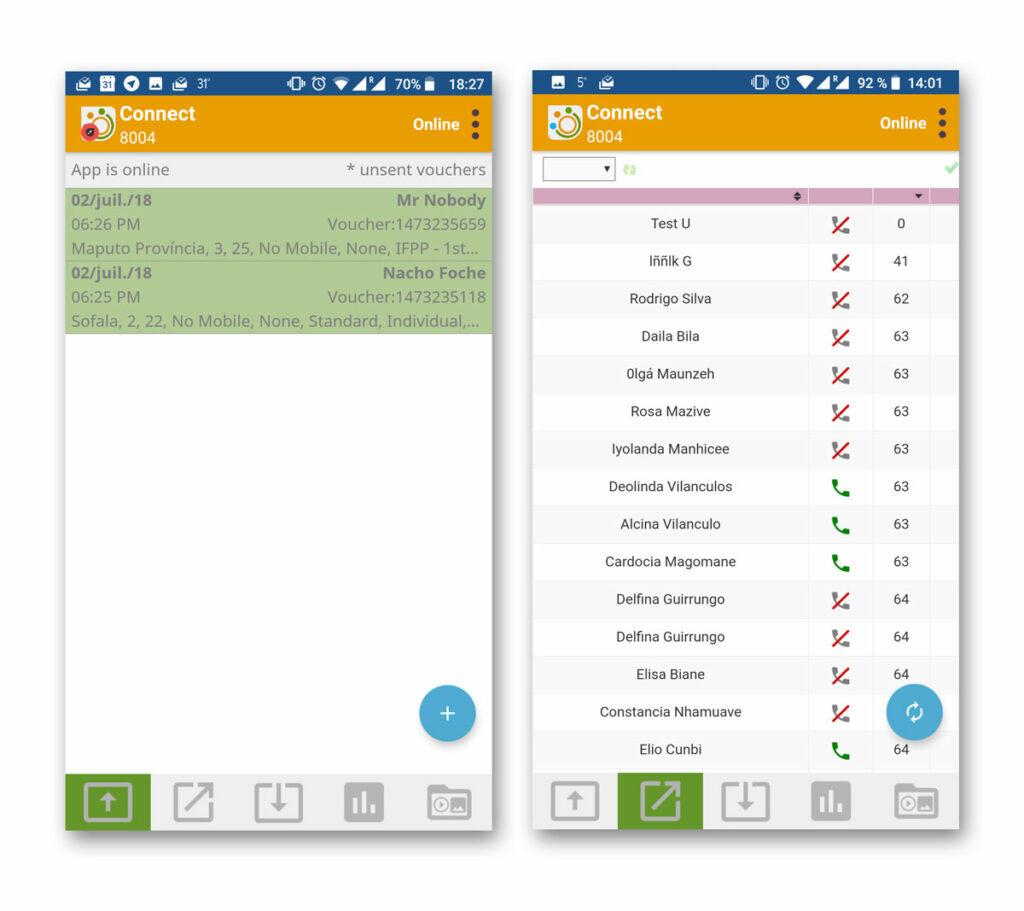
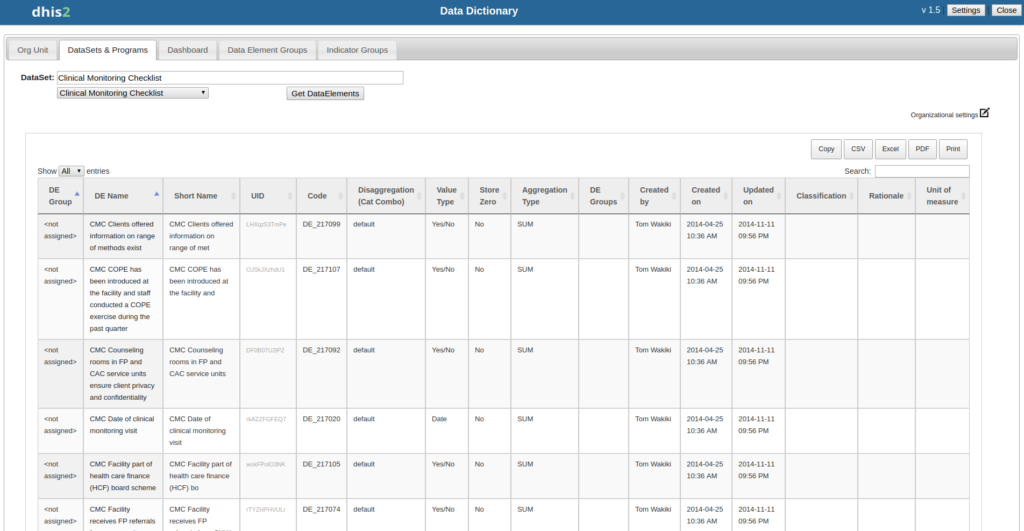
Data Dictionary
PSI uses DHIS2 as its Health Management Information System (HMIS). Data is being collected daily from up to 15.000 sites across 60+ countries, allowing analysis of the health programs’ impact at district, country, and global level. EyeSeeTea, in collaboration with PSI, has developed an application to visualize a picture of the metadata in the database and its connection across programs, datasets, health facilities, and how the data is being used and filled across the different countries and platforms. Data can be analyzed in a tabular or graphical interactive way.
DHIS2 core development for interpretations, analytics and dashboard enhancements
EyeSeeTea worked with PSI to implement and integrate several developments of DHIS2’s core functionality. PSI was seeking to push for the use of DHIS2 interpretations across all of its country implementations. Due to DHIS2’s existing limitations, EST and PSI aimed to implement several features to facilitate the adaptation of interpretations and communications among users in PSI.
The main features include the development of an interpretation sidebar in the analytic tools (pivot table, chart visualizer, event report, event visualizer and maps), improvements in the dashboard application to facilitate access to the analytical information, backend developments to provide mechanisms for subscription, interpretations comments, notifications, etc.
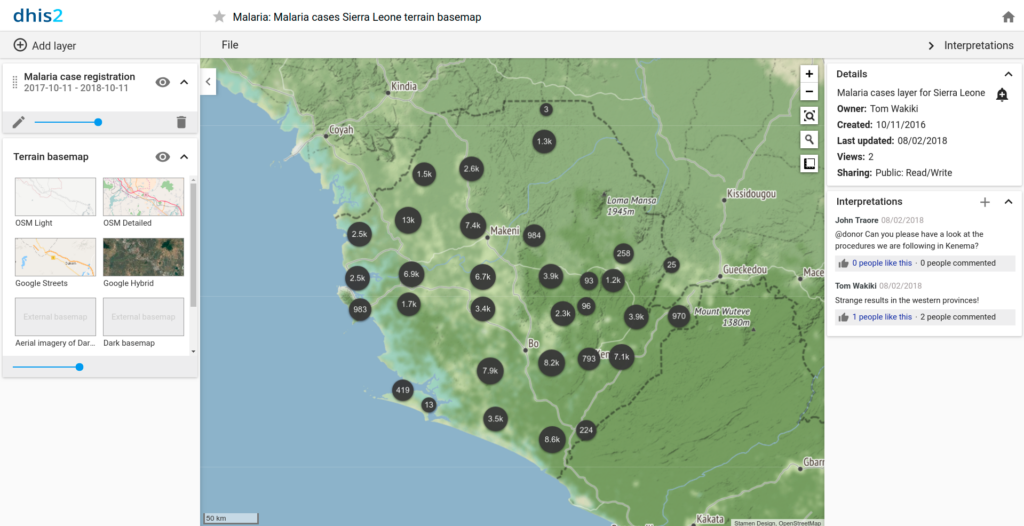
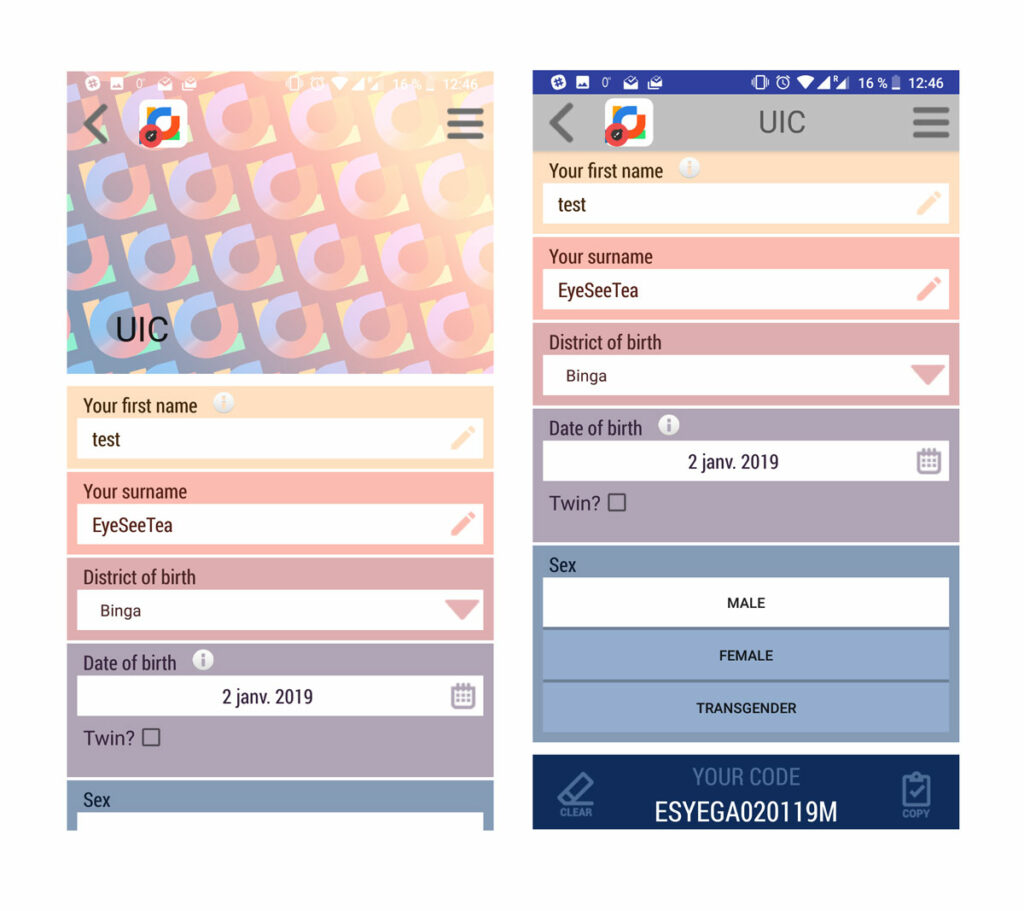
UIC
UIC is a unique identifier generator app. In some isolated rural areas of many countries in Africa, where patients do not necessarily have a national identification number and can only be registered in a system by using common information about their lives that they always know, this Application is used for creating automatically a unique identifier given a small survey about personal information. This ID is used to anonymize and identify patients in DHIS2 systems.
Norwegian Refugee Council
The Norwegian Refugee Council is an independent humanitarian organisation helping people forced to flee. They work in crises in 31 countries, where they help save lives and rebuild futures. NRC is a determined advocate for displaced people and support the UN and local authorities in humanitarian crises.
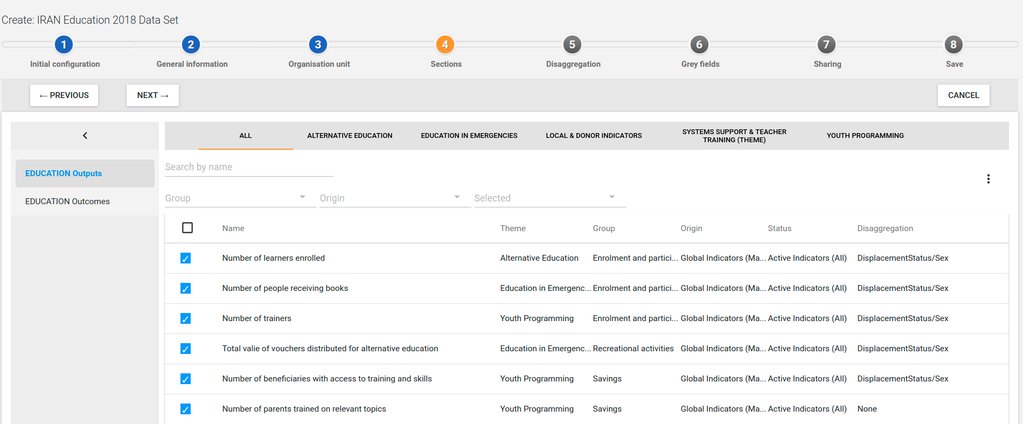
Dataset Configuration & Recoding Web Apps
Dataset Configuration allows, among many things, creating DHIS2 Datasets (and some other pieces of metadata) using a multistep wizard. The wizard offers a user friendly and intuitive interface and predicts some of the information based on the NRC metadata and the user profile. In particular, the application has been carefully designed to bring a sophisticated and intuitive graphical interface to manage Data Elements and Indicators, disaggregate levels and grey fields, and create metadata pieces on-the-fly. The Dataset Recoding application allows users to delete, correct and push new data.
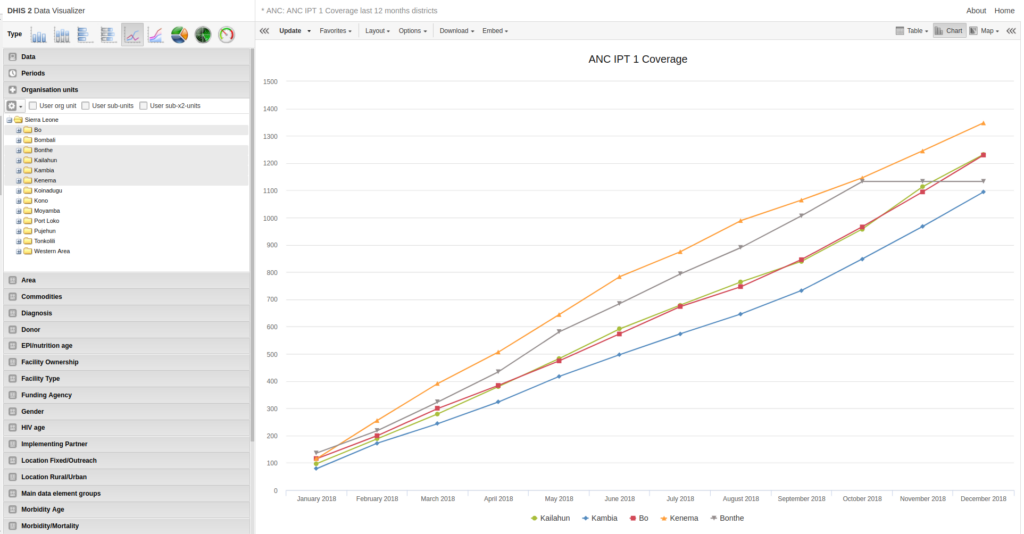
DHIS2 core development for pivot/visualisation and indicator calculation enhancement
Starting from a DHIS2 fork, this project aimed to modify some core and modules features of DHIS2 2.23, specially from pivot tables’ web application, in order to improve and extend some of its functions. The main objectives were to allow Indicators to be created in a DataSetAttribute basis, and to provide a way and an interface to create calculated items in pivot tables by using other fields from the table.
University of the Western Cape
The University of the Western Cape is a national university of South Africa. It is committed to excellence in teaching, learning and research to nurturing the cultural diversity of South Africa and to responding in critical and creative ways to the needs of a society in transition. It was created in 1959 as a College for people of color enrolling students for lower to middle level positions in schools. In 1970 the institution gained status as a University and was able to award its own degrees and diplomas.

Libre Router power efficiency
In the framework of the Fund for Internet Research and Education (FIRE) Africa Grant, EyeSeeTea, in collaboration with the University of the Western Cape, designed a Power Efficiency system for open source and open hardware routers. The system, LibreRouter, aims to provide cheap & open solutions for community networks.
WiFi Calling App
The WiFi Calling App, designed and developed in the framework of the FIRE Africa Grant with the University of the Western Cape, is conceived to provide community networks users of LibreRouters a WiFi tool to be able to call using the cheapest method available. The application uses a set of Web Services to interact with the system and allows the user to decide if (s)he wants to use WiFi network, cellular network, depending on the cost, among other centralized functionalities.
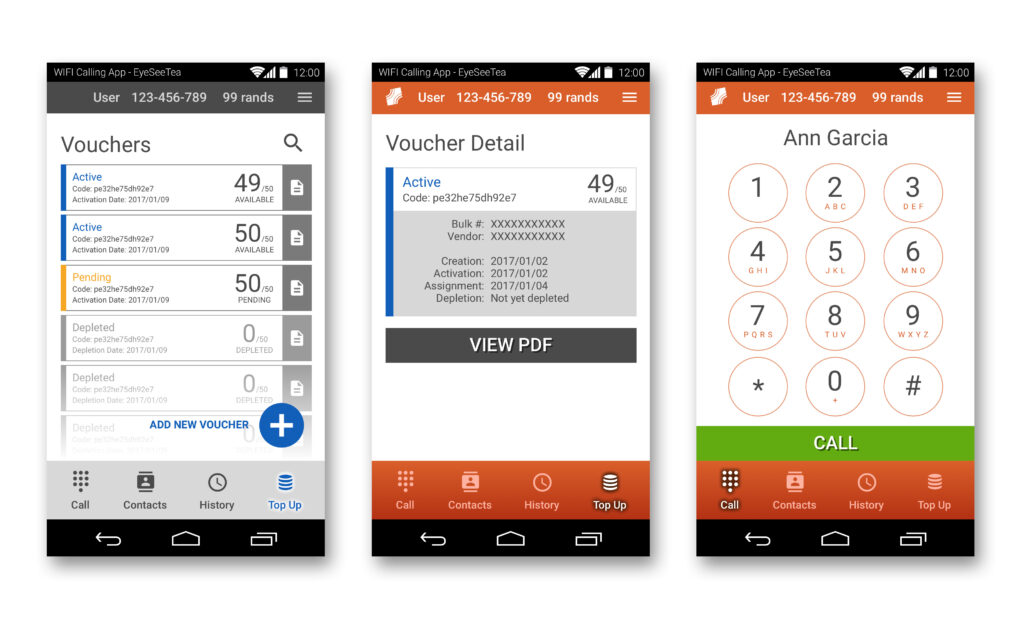
Universidad Rey Juan Carlos
Located in Madrid, Universidad Rey Juan Carlos, and its Signal Theory Department, have focused their research in the wireless telecommunication networks for isolated rural areas. EyeSeeTea has provided its services as part of a infrastructure project for low bandwidth networks.
QoS Configuration System
Automatic QoS (Quality of Service) configuration system for embedded devices in a testbed network for URJC research project. This set of GNU/Linux tools turns an embedded system into a router with bandwidth adaptive capabilities, able to respond to network fluctuations.
The designed system implements an algorithm to dynamically adjust the Quality of Service in both a cellular network and a WiFi network by using the advanced routing mechanism from the Linux Kernel. With this algorithm, the systems securely exchange information about the real-time load on each extreme of the network. This system gives us the capacity to define perimeters of applications and how to decide which traffic to prioritize. The algorithm takes that information and reconfigures all of the intermediate queueing systems in real-time to maximize the network availability and service quality.
